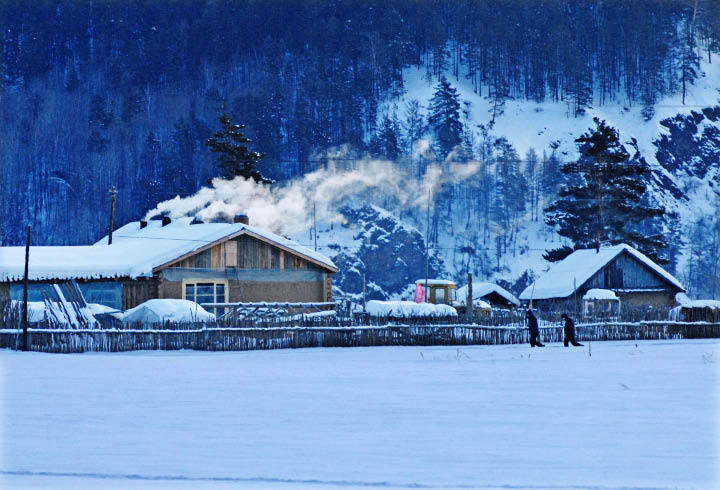A Visit to China’s “Arctic Village”
By NANCY TIAN
Here, the average low in the three winter months hovers around -35°C (-31°F). An annual mean temperature of -4.29 °C (24.3 °F) means the village is only just warm enough to avoid continuous permafrost.
Fortunately, we traveled to Beiji Village while the thermometer was still registering positive values. We had been eagerly looking forward to our trip for some time, and departed from Beijing with a sense of imminent adventure.
Located in northwestern Heilongjiang Province, Beiji Village is the highest geographical point in China by latitude. China’s frigid border with Russia is demarcated by what Russians call the Amur River, and what Chinese know as Heilongjiang – the Black Dragon River, from which the province receives its name.
The “Arctic Village” in Mohe was built in the 1960s. Today the village covers an area of 16 square kilometers. There are 243 permanent households with a combined population of 1,000 people.
 |
| Beiji Village is the highest geographical point in China, where the average temperature in the three winter months hovers around -35°C. |
We took a flight from Beijing to Mohe. Mohe’s Gulian Airport was opened in 2008. We left the capital at 10:45 in the morning and landed at 3:30 in the afternoon after a brief stopover in Harbin, capital of Heilongjiang Province. It was a relatively long journey for a domestic flight, and I don’t even want to think about how long it would have taken by bus or train – the only options available before the airport opened.
I felt quite sick as we drove from the airport into the “Arctic Village.” Perhaps it was the sudden drop in temperature. It was a shame while I hunched over a sick bag, my travel companions were glued to the windows, mesmerized by the blue sky, fluffy white clouds and crisp greenery of the forest.
Before dinnertime, we arrived at the rural inn we had booked from Beijing. “Riverside Family,” as the inn was called, was picturesquely situated by the riverbank. I highly recommend it.
After a short rest to allow me to recover, we couldn’t wait to head out and explore the northernmost village in China. It’s not big, and a tour took no time at all.
Beiji seemed to be built up on wide stretches of lush green pasture. Its architecture reminded one of the log cabin villages of many a fairy tale. The walls of the buildings are built from pine logs, which are then coated in mud. This style of construction is pervasive in the timber-rich border regions of China and Russia.
Every household we saw had a yard in which to grow vegetables and sunflowers. The low wooden fences separating households seemed purely decorative; neighbors chat to each other through them, and front gates are always open for visitors. It was a breath of fresh air – literally – after Beijing.
The “Arctic Village” really gave us an idyllic picture of country life. Locals told us that if someone happens to lose something, nobody will pick it up, and the item will lie waiting until its owner finds it.
As dinnertime approached, smoke billowed up from kitchen chimneys, adding a final, rustic touch to the fairy-tale scene.
A sign that read “Arctic Square” alerted us to the fact that we had reached the center of the village. We spotted there a stone tablet, which read “The Arctic of the Divine Land.” I suppose it’s not technically accurate – the artic circle is another 1,500 kilometers to the North – but nonetheless we felt we had achieved something by getting there. The “Arctic” appellation is certainly the town’s big tourism draw card; shops, the post office and inns all claim to be “northernmost” in China.
We headed down to the Heilongjiang River. Russia is literally on the other side. During our stay, I would wander along the river whenever I got the chance. It is beautiful, deep and tranquil, and reflected the clouds, sky and sunshine in technicolor detail. It’s icy cold even in the months when it’s not frozen over – a quick splash of water to the face, and I felt refreshed.

